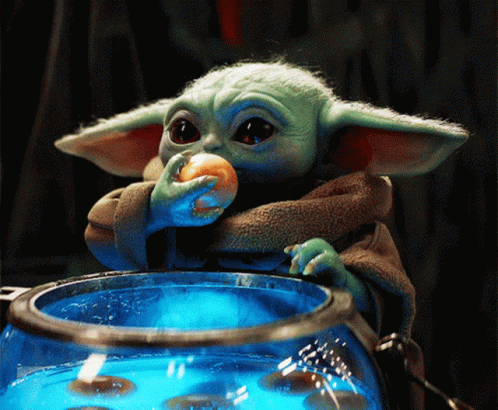Materiality and the Mandalorian: Beskar steel as a social agent

Have you ever thought about what must have been going on for people to discover how to work iron? All the experiments that people must have been carrying out to discover how to make steel? There's an ongoing joke in the show Detectorists about one of the characters and the fact that they only ever find buttons. But buttons are an amazing technology. They allow us to do so much more with clothes. There was a day before, and a day after buttons.
The smallest technologies have had momentous impact on the world and we barely think about it now.
OK, I'm getting away from myself here.
Beskar Steel is a Social Agent
This is the bit where I can imagine you might wrinkle your nose if you haven't spent the last seven years reading about the latest developments in materiality theories.
I'm going to talk about Beskar steel as a social agent.
Remember, as I said in the previous post, a social agent (or social actor) is somebody (or something) that can actively impact other people and things around it. For most people, I doubt that this includes objects. They don't have minds (at least as far as we understand them), so that means they can't do things like make decisions or think.
To illustrate this point, Tim Ingold explores in his 2013 book Making, how he took students through the process of making objects. Students on the course discovered that they couldn't just force materials to do what they wanted. If you've spent any time attempting to work with physical materials, you might well have encountered this yourself.
When I'm working on my Moomin House, the wood has to be softened with water to bend it into the required curving shapes. As I develop my own skills in working with my hands and physical materials, I'm getting better at managing these interactions, but there are a lot of forces beyond my own will at play here, including the limits of my gross and fine motor skills, experience, and the unique qualities of the wood I'm working with. The wood has been going through its own journey, where it has been exposed to a unique combination of forces from originally being part of a tree on to this moment on my dining room table.
Beskar steel is very much like this. Each piece is unique, like all materials, and has an ever-evolving function for the Mandalorian. In the first season, Mando collects a lot of Beskar steel and gradually builds up a better armour set. The steel involved in this season performs two central functions for him.
The second function is obvious—the steel is made into protective armour—but can only be achieved if the first function is achieved. Part of the role of the Beskar steel is to act as a social agent stabilising and cementing the relationship between Mando and the Armourer.
The Armourer is the gatekeeper and facilitator of Mando's sect. She provides Mando and, by extension, us, of the rules of the sect and what he must do to remain a member. She is also a skilled craftsperson, responsible for transforming the Beskar steel Mando brings her into armour.
Beskar steel is more than just almost-indestructible and therefore physically valuable. It also has a social and spiritual function, especially for Mando's sect. Beskar steel is what helps him maintain his connection to his sect but it also protects him from harm. The steel that becomes his helmet is what stands between Mando and the outside world, ensuring he is able to maintain the rules that guarantee his membership of the group.
All this Beskar steel is responsible for a lot of social action here.
You might see now why The Mandalorian is such an appealing series for a researcher in materiality and material culture.
But we do need to talk about the weaponry side of Beskar steel. In the middle of The Book of Boba Fett, when Mando takes over the story, he brings the Armourer the Beskar steel spear he was got from Moff Gideon. Here we confirm that Beskar steel can't be used as a weapon.
I had two thoughts about this:
But:
Initially, I wondered if this was, like I believe the Beskar steel might be, a profane act for Mando's sect. If Beskar should only be used to unify and protect, then its employment in a weapon of any kind would seem to suggest that whoever did this had no respect for the social rules of the sect.
Well, Wookieepedia has a possible answer for me. The Darksaber was created by Tarre Viszla, the first Mandalorian to become a Jedi. A brief quote on the page of an exchange between Kanan Jarrus and Fenn Rau informs us that:
Lightsabers are a tricky case for me and my nascent materiality analysis skills, so I'll have to come back to the idea of the saber later. For now, I suspect that the line that "They used the saber to unify the people" may provide something of an answer.
Now, the primary role of Beskar is as a defensive agent. However, it also acts as a means of exchange. As we saw back in the first post I wrote on purification in The Mandalorian, Beskar is a way of cementing membership in the Mandalorian culture. This is why it is such a big deal that Mando himself has the spear melted down and turned into a more important physical object to give as a gift to Grogu.
Now I have to stop because as I write, I haven't actually watched the episode where I find out what that object is. I will have to come back to this when I know, because it'll be very interesting to see what Mando gives Grogu. For now, it's enough to say that I find it especially meaningful, on a material-semiotic level, that the Armourer should transform the Beskar from the spear, which a culturally inappropriate use of that specific material, into something that is culturally acceptable.
OK, for now we're done with the Mandalorian, but I'm going to come back to this once I've watched more of season three. Coming up, I'm going to be posting some of the pieces I've been writing about the materiality of magic in R F Kuang's Babel. If you've ever wanted to know how a speech can be a material object, or how magical words might work in fiction (or anywhere else, for that matter), stick around.

